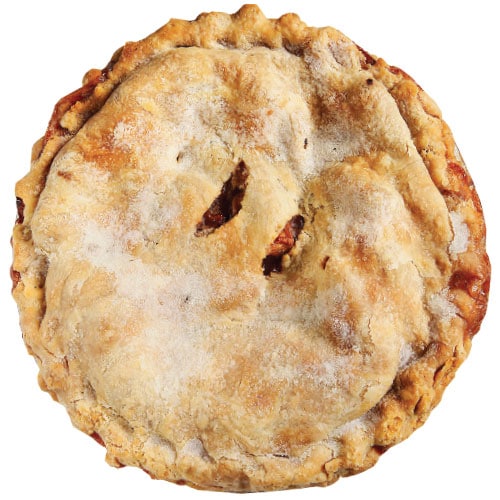
Piecrusts: Top That
Nothing says fall like the smell of cinnamon, vanilla, and buttery piecrust wafting through the house. Whether your windowsill is lined with fruited, savory, or custard pies, the real trick is in knowing the right way to top each variety.once you crack the crust code, it’s as easy as—well, you know.
 Full Crust
Full Crust
This traditional top works best on pies that contain hearty, solid ingredients like apples or peaches, and is also a go-to for potpies. The top-and-bottom crusts help lock in moisture and steam, creating a tender, fragrant pie.
Flat-topped pies still need to be vented, which can be as easy as slicing a small slit in the top. To avoid unsightly oozing from this vent, Kelly Maucere, owner of My Sugar Pie, suggests using a pie bird, a small, ceramic, hollow figurine that nestles between the crusts to help the pie hold its shape.
Difficulty: 3/5
 Crumb Top Piecrust
Crumb Top Piecrust
Gwendolyn Rogers, owner of The Cake Bake Shop, crowns her Dutch Apple Pie with cinnamon, brown sugar, oats, and butter. The topping soaks into the pie, giving it full-bodied flavor.
Difficulty: 2/5
 Open Face Piecrust
Open Face Piecrust
This technique is good for pumpkin pies, sugar-cream pies, mousse pies, and other varieties that need a congealed or golden-brown surface. For the perfect one-layer pecan pie, Rogers submerges whole and chopped Georgia pecans in a mixture of sugar and butter. In the oven, the whole pecans rise to the top and crystallize. For a one-layer pie, the bottom has to be perfect. “I add vodka to the crust instead of vegetable shortening,” Rogers says. “It makes the crust really flaky and light.”
Difficulty: 1/5
 Lattice Crust
Lattice Crust
A crisscross crust is perfect for pies that contain juicy fruits like cherries, red raspberries, or blueberries. The open-weave design allows the pie to vent and helps some of the liquid evaporate.
Difficulty: 5/5

 Full Crust
Full Crust Crumb Top Piecrust
Crumb Top Piecrust Open Face Piecrust
Open Face Piecrust Lattice Crust
Lattice Crust



